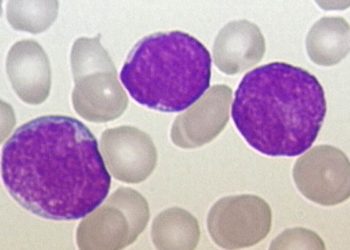Busy ICUs have shorter patient stays and more readmissions; short term outcomes unaffected
Image: PD
1. Increased strain on intensive care units (ICU) is associated with shorter lengths of stay (LOS) and more subsequent readmissions.
2. However, increased ICU strain does not affect overall length of hospital stay or in-hospital mortality for recently discharged patients.
Evidence Rating Level: 2 (Good)
Study Rundown: The high cost of critical care, shortage of providers, and an aging sicker population in the United States has resulted in many ICUs operating under conditions of strain. Constraints such as increased bed occupancy, inadequate staffing, and more new admissions often leads to earlier discharges from ICUs. Studies investigating the effects of such strain metrics on patient outcomes have yielded mixed results. Furthermore, the majority of these studies have been single-center investigations of the effects of isolated elements of ICU capacity strain on outcomes. The current study explored the consequences of three metrics of ICU capacity strain (daily census, proportion of new admissions, and acuity of other patients in the ICU) at the time of patient discharge on patient outcomes. Increases in these three strain variables on the days of ICU discharge were associated with shorter preceding ICU LOS and increased odds of readmission. However, notably, none of the strain metrics were associated with increased odds of subsequent in-hospital death, reduced odds of being discharged home from the hospital, or longer total hospital LOS. An important limitation of this study is that post-hospital discharge data was not collected, and therefore long-term outcomes could not be measured. Nonetheless, the current study suggests that, while strained ICUs may be more likely to discharge patients sooner and accrue more readmissions, important patient outcomes such as in-hospital mortality and length of total hospital stay are not significantly affected.
Click to read the study, published today in the Annals of Internal Medicine
Relevant Reading: Hospital mortality in relation to staff workload: a 4-year study in an adult intensive-care unit
In-Depth [retrospective cohort study]: This study analyzed data from the Project IMPACT database, which prospectively collected information on patients in 194 ICUs at 131 hospitals across the US. This study included patients who were discharged after an initial ICU admission to a hospital floor or step-down unit. Three measures of ICU capacity strain, each calculated at the time of patient discharge, were assessed: the ICU’s census, the proportion of the daily census composed of new admissions that day, and the acuity or average predicted probability of death of other patients in the ICU. Outcomes included LOS of the initial ICU admission, readmissions to the ICU within 72 hours, in-hospital mortality rates for all patients from the time of initial ICU discharge through hospital discharge, total hospital LOS, and the ultimate destination at hospital discharge. The authors used bivariate analyses to evaluate the association between ICU capacity strain measures and each outcome, with linear and logistic regression models used for continuous and categorical variables, respectively. Importantly, the authors adjusted for potential confounding effects of severity of illness of the discharged patients in their analyses.
Data was analyzed from 200,730 eligible patients who survived an initial ICU admission and were discharged to a hospital floor or step-down unit. 3.2% of the patients had an ICU readmission within 72 hours, 4.0% died in the hospital after their initial ICU discharge, and 63.3% were ultimately discharged directly home. After adjusting for patient characteristics, each strain variable was inversely associated with ICU LOS. Increases in the strain variables were also associated with greater odds of 72-hour ICU readmission (census OR 1.03, [95% CI 1.00-1.06]; admissions OR 1.03, [CI 1.00-1.06], acuity OR 1.05, [CI 1.01-1.10]). Going from the 5th to 95th percentile of strain was associated with a 6.3-hour reduction in ICU LOS (CI 5.3% – 7.3%) and a 1.0% increase in the odds of ICU readmission (CI 0.6% – 1.5%). However, no capacity strain variable was associated with increased odds of subsequent in-hospital death, longer hospital LOS, or decreased odds of being discharged directly home from the hospital. Interestingly, discharge on days with increased admissions was actually associated with lower odds of subsequent in-hospital death (OR 0.97, [CI, 0.94-0.99]) and higher odds of being discharged directly home from the hospital (OR 1.01, [CI 1.00-1.03]).
By Sarah Chuzi and Aimee Li, M.D.
© 2013 2minutemedicine.com. All rights reserved. No works may be reproduced without written consent from 2minutemedicine.com. Disclaimer: We present factual information directly from peer reviewed medical journals. No post should be construed as medical advice and is not intended as such by the authors or by 2minutemedicine.com. PLEASE SEE A HEALTHCARE PROVIDER IN YOUR AREA IF YOU SEEK MEDICAL ADVICE OF ANY SORT. Content is produced in accordance with fair use copyrights solely and strictly for the purpose of teaching, news and criticism. No benefit, monetary or otherwise, is realized by any participants or the owner of this domain.






